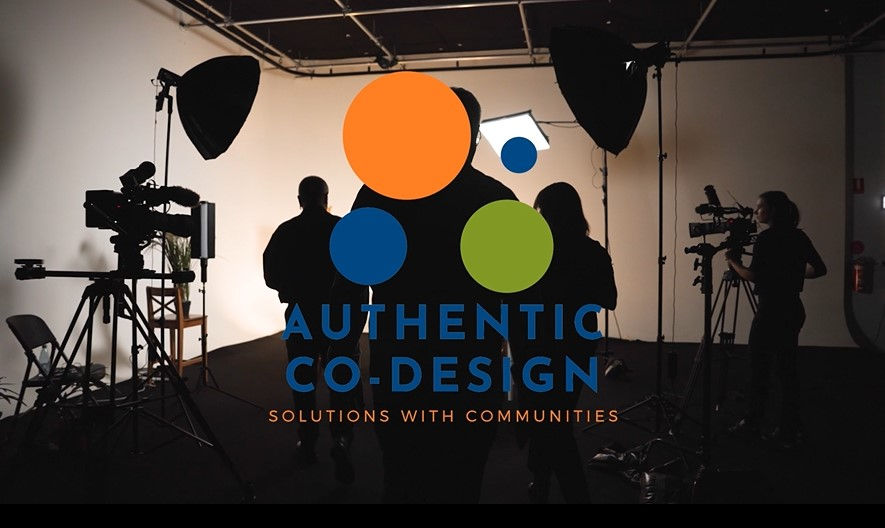Discover the Benefits of Co-Design: Insights from Our Recent Webinar
- Anthony Boxshall

- May 19
- 3 min read
Updated: Jun 17
Overview of the Webinar
On May 1st, the team delivered another free webinar discussing the benefits of co-design. Over 55 people attended and participated in this engaging session. We explored various advantages of co-design, particularly focusing on its potential for long-term cost reductions. Traditional engagement methods often lead to setbacks that need to be undone later. We all have examples of that!
One significant benefit of co-design is its ability to help organizations build their own internal capabilities. This fosters collaboration and encourages teams to work together more effectively.
Internal Challenges with Co-Design
During the webinar, we addressed common internal challenges. Participants expressed concerns such as internal disquiet about co-design and fears that it could be risky for their organizations. However, we also offered some simple solutions for leadership to consider when implementing co-design practices.
These strategies can help bridge the gap between skepticism and acceptance. By fostering a supportive environment, organizations can better grasp the valuable insights that co-design provides.
Engaging with Attendees’ Questions
After laying the groundwork, we opened the floor for discussion. Our interactive attendees posed fantastic questions, generating over 30 inquiries. These questions covered a wide range of topics, including:
How to get started with co-design
Building internal support for projects
Establishing constraints and negotiables
Effective methods for co-designing
Real-world examples in practice
Creating a body of evidence
Evaluating co-design success
We were thrilled to chat about most of these themes, providing insights and advice along the way.
How to Get Started with Co-Design
Starting with co-design can feel overwhelming, but breaking it down into manageable steps can help. Here are some pointers for beginners:
Identify Key Stakeholders: Start by recognizing who will be involved in the co-design process. This includes both internal team members and external stakeholders or users.
Set Clear Goals: Define what you hope to achieve through co-design. Clear objectives will guide the process and keep everyone aligned.
Foster a Culture of Collaboration: Encourage open communication. When people feel valued and heard, they are more likely to contribute meaningfully.
By following these steps, organizations can gain momentum and unlock the full potential of co-design.
Building Internal Support
For co-design to thrive, internal support is crucial. Here are some strategies to cultivate a supportive atmosphere:
Training and Education: Offer workshops and resources about co-design principles. This helps build knowledge and enthusiasm.
Involve Team Members Early: Engaging team members at the beginning ensures they feel included in the process.
Highlight Success Stories: Share examples of successful co-design projects. This can inspire confidence and spark interest within the organization.
By focusing on internal dynamics, organizations can enhance the likelihood of successful co-design initiatives.
Establishing Constraints and Negotiables
When embarking on a co-design journey, it's essential to establish clear constraints and negotiables. Here’s how to approach this:
Define Boundaries: Determine the scope of the project. What are its limitations? What areas are open for discussion?
Open Dialogue: Encourage participants to voice their concerns and preferences. This dialogue can lead to a more well-rounded understanding of needs and wants.
Document Agreements: Keep a record of what was agreed upon regarding constraints and negotiables. This transparency promotes accountability.
These steps can improve not only the co-design process but also team morale and trust.
Evaluating Co-Design Success
Evaluation is a critical part of co-design. To measure success effectively, consider the following:
Feedback Mechanisms: Implement ways to gather feedback from participants about their experiences. Surveys or follow-up meetings can be valuable.
Success Metrics: Identify specific metrics that show how co-design has impacted the project. This could relate to cost savings, stakeholder satisfaction, or project timelines.
Continuous Improvement: Use evaluation findings to refine and improve future co-design initiatives. Adapting over time leads to better outcomes.
By evaluating co-design efforts, organizations can continuously improve their methods and strategies.
Conclusion: The Importance of Co-Design
The recent webinar shed light on the myriad benefits of co-design. From building internal capabilities to fostering collaboration, the insights shared were invaluable.
If you're considering adopting co-design practices, visit www.authenticcodesign.com for more information about our self-paced courses and other content to help you do co-design authentically.
Don’t miss the opportunity to watch the recording of the webinar for a more in-depth exploration of these topics. Check out the video of the webinar here:




Comments